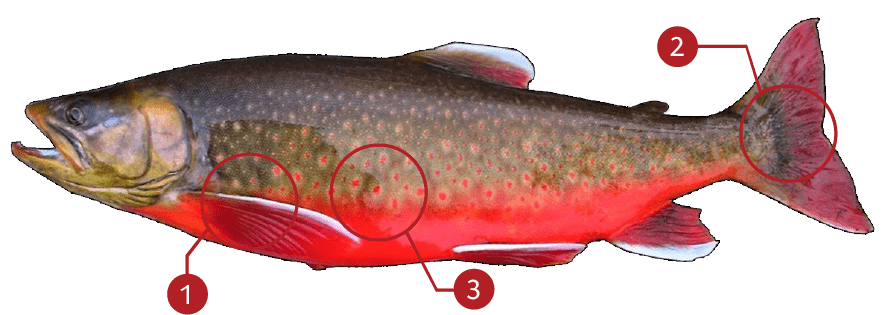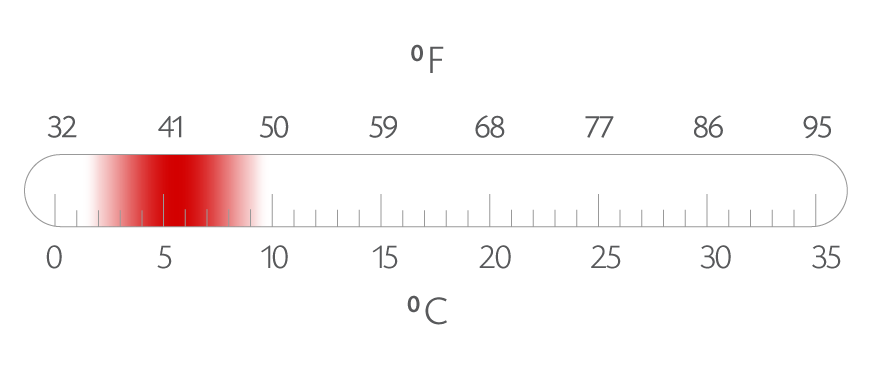ARCTIC CHAR

IDENTIFICATION
| |
Leading edges of all the fins on the lower part of the body are milky white |
| |
Slightly forked tail that almost appears squared |
| |
Spawning males exhibit brilliant red or reddish-orange coloration on the sides |
How to identify an Arctic Char
Like all chars, the Arctic char has light colored spots on the body and the leading edges of all the fins on the lower part of the body are milky white. These features set the chars apart from the salmons and trouts, which are the chars’ closest relatives and similar in body shape. There is an adipose fin between the dorsal fin and the tail, and an axillary process (a small bump) at the base of each pelvic fin. Arctic chars have squarish or slightly forked tails.The species most often confused with the Arctic char is an extremely close relative (also a char), the Dolly Varden (Salvelinus malma). Often it is virtually impossible to distinguish between the two species except by laboratory analysis and even today there are few scientists who know how to make a positive identification. Even if an individual is thoroughly familiar with all the color variations of all salmonnids occurring in the area, color is not a factor that will distinguish the Arctic char from the Dolly Varden.There have been plenty of erroneous materials published concerning the distribution of each species, and consequently anglers and scientists alike have made many false identifications based on the mistaken belief that only Arctic char or only Dolly Varden occurred in a given area, lake, or river in Alaska. An individual who is familiar with both species may be able to make an identification based on the size of the spots, which are larger in the Arctic char. However, fish returning from the sea are often silvery with no spots at all, making external identification all but impossible. Gill raker counts are the most helpful method of identification. In Canada, Victoria Island (Northwest Territory) char have about 25-30 gill rakers on the first left gill arch. Dolly Varden have 21-22. Arctic char have 40-45 pyloric caeca (worm-like appendages on the pylorus, the section of intestine directly after the stomach), while Dolly Varden have about 30. As in all salmon, trout, and char, both the color of the body and the shape of the head vary considerably in different forms of the fish such as the landlocked, seagoing, and most of all, spawning males which develop a kype (the hook at the end of the snout).
Where to catch Arctic Char
The Arctic char is circumpolar in distribution, occurring around the globe from Maine and New Hampshire in the United States northward across northern Canada, Alaska and the Aleutian Islands, and from northern Russia south to Lake Baikal and Kamchatka as well as in Iceland, Great Britain, Scandinavia, the Alps, and Spitsbergen, among other places. An anadromous species (except where it has become landlocked), the Arctic char always returns from the sea to spawn in fresh water, usually in lakes or quiet pools of rivers over gravel bottom. It spawns in autumn or winter when water temperatures reach 4° C or less.
SPAWNING TEMPERATURES

SPAWNING MONTHS

TARGET AREAS
|
|

